What is Pilates and who was the man behind it?
What is Pilates
Pilates embodies a method crafted to elongate, fortify, and reinstate equilibrium to the body. Rooted in a thorough comprehension of the body’s muscular and skeletal systems, Pilates instructors curate all-encompassing workout regimens for their clients. Each session zeroes in on distinct areas while incorporating movements that unify the entire body, fostering a process of re-education and restoration to attain peak muscular and skeletal function.
It is this holistic approach that distinguishes Pilates from a multitude of other exercise forms. Throughout our resistance training, we utilize springs and bodyweight exercises to cultivate a robust core and enhance overall conditioning.
The methodology employs exercises that target the body from within. The underlying, foundational muscles of the shoulders, upper back, diaphragm, chest, pelvis, lower back, and buttocks are methodically developed to establish body stabilization, forming an exceptionally solid foundation for movement. Subsequently, the mobilizing muscles responsible for bodily movement can function with heightened efficiency and fluidity.
Endorsed by osteopaths, physiotherapists, chiropractors, and general practitioners, Pilates is acclaimed as one of the safest exercise forms available today. It holds the potential to benefit a wide spectrum of individuals, irrespective of age or fitness level.
A Man 60 years ahead of his time
Read into the exceptional story of the man behind the worldwide Pilates Movement…
To Know The Man Behind The Method
Joseph H. Pilates came into the world in Monchengladbach, Germany, in the year 1883. Despite his fragile nature as a child, he faced challenges such as asthma, rickets, and rheumatic fever. Motivated by an unwavering determination to surmount these adversities, he embarked on a lifelong journey to attain physical resilience. Joe initiated his path by immersing himself in bodybuilding and gymnastics, ultimately crafting a remarkably well-rounded physique by the age of 14. So impressive was his physical development that he was approached to serve as a model for anatomical charts. Drawing inspiration from both Western and Eastern exercise disciplines, including yoga, he amalgamated these influences into his own unique approach.
His pursuits encompassed a diverse range of physical activities. Through consistent effort, he not only became accomplished in gymnastics but also excelled as a boxer, circus performer, and skier.
The picture oposite is of Joseph’s father Friedrich Pilates He can be seen in the middle of a group of gymnasts posing in front of Gladbach City Hall is one of the most exciting exhibits of the city archives in Mönchengladbach.

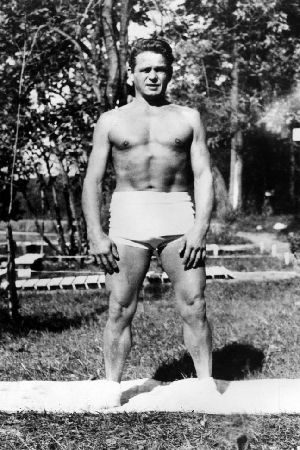
Joseph Pilates 1941 – Age 58
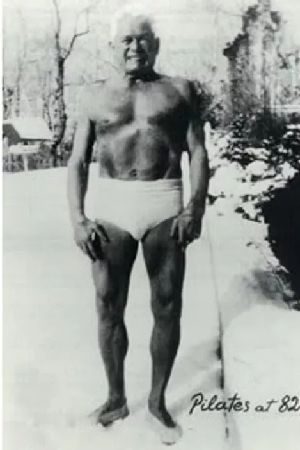
Joseph Pilates 1965 – Age 82
In the year 1914, Pilates found himself residing in England, engaged as a circus performer, boxer, and instructor in self-defense. With the onset of the First World War, he, like other German nationals, faced internment. It was during this period that he took strides in further refining his approach to physical fitness by imparting his knowledge to his fellow internees. As the war progressed, he took on the role of an orderly at a hospital located on the Isle of Man. In this capacity, he dedicated himself to aiding patients who had lost the ability to walk. Innovatively, he affixed bed springs to the hospital beds, providing vital support for the patients’ limbs. This innovation would later evolve into his renowned apparatus, known as the ‘Cadillac’.
Many of the pieces of equipment he designed, though with some adaptations, endure to this day and remain integral to the routines of numerous Pilates studios, including our own.
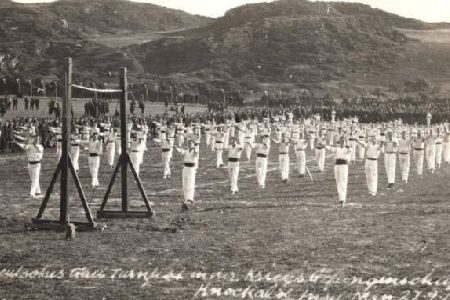
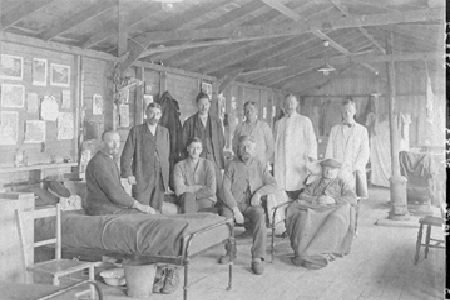
Pilates relocated to the United States and, alongside his wife Clara, established a studio in New York in 1926. This studio showcased a range of apparatus meticulously designed to enhance his rehabilitation endeavors. Swiftly gaining traction, the studio garnered popularity for providing opportunities to refine techniques or facilitate the recovery of clients. The news of its efficacy spread rapidly, attracting an array of luminaries, including celebrated figures from the world of dance like George Balanchine and Martha Graham.
Their approach, which Joseph and Clara Pilates referred to as ‘contrology’, swiftly gained a devoted following within the dance and performing arts community. According to the Pilates couple, their method epitomized a seamless integration of body, mind, and spirit.
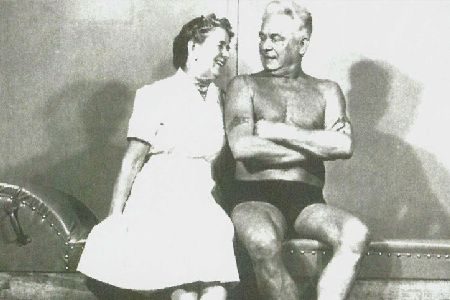
Joseph and Clara at the Studio in New York

Joseph and Clara
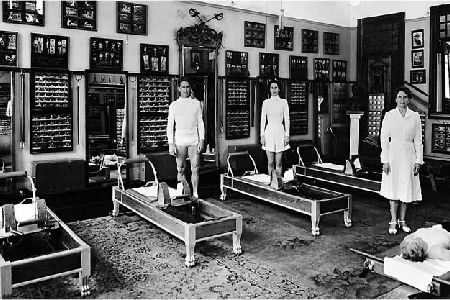
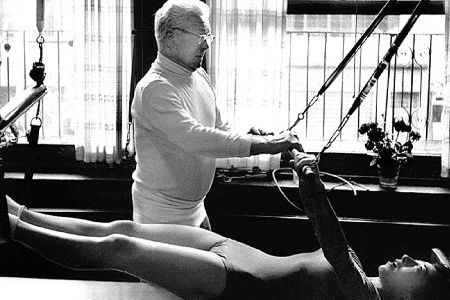
Photos of the inside of Pilates Studio in New York and of Joseph Teaching
Regrettably, Joseph H. Pilates passed away in 1967 at the age of 84. Presently, his methodology is embraced by a diverse array of individuals globally, including professional athletes, dancers, fitness aficionados, rehabilitation specialists, and the general populace.
Following Joseph Pilates’ demise, Clara Pilates valiantly carried forward his legacy, maintaining her role as an instructor and overseeing the studio for an additional decade.
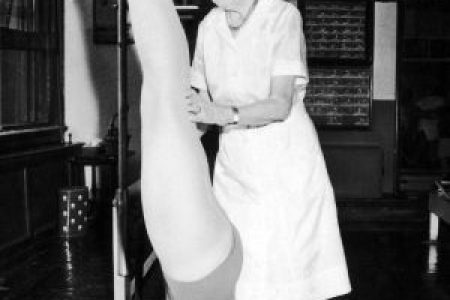

Clara Pilates teaching and continuing the method after his death.
Joseph and Clara undertook the responsibility of training a select group of instructors, referred to as the Pilates elders, with the intention of preserving and perpetuating their method. However, only two individuals received formal certification: Kathleen Stanford Grant and Lolita San Miguel. Regrettably, Kathleen Grant, affectionately known as Kathy, passed away in 2010, just a breath away from her ninetieth birthday. Notably, Lolita San Miguel stands as the sole living instructor directly certified by Joseph Pilates himself.
Anita Horry, the visionary behind Pilates Centre Malta, takes immense pride in being a student of Lolita San Miguel. This honor bestowed upon her signifies that the teachings of Joseph and Clara Pilates have been handed down through Lolita San Miguel, establishing a direct lineage that Anita is privileged to embrace.
Pilates Memorial Plaque
My esteemed mentor, Lolita, embarked on a journey to Germany to trace the roots of Joseph Pilates and explore how his method had impacted the local populace. In 2009, she ventured to the very city of his birth, hoping to uncover the resonance of his legacy. Yet, what she discovered was that, apart from a select few, Joseph Pilates remained largely unknown in Monchengladbach. This revelation ignited a passionate endeavor within her – to immortalize the birthplace of Joseph Pilates, allowing people worldwide to pilgrimage to the site, similar to how Vienna is associated with Bach and Stratford-upon-Avon with William Shakespeare.
With a network of contributors rallying behind her cause, she successfully erected a memorial plaque on the once-vacant space in front of his birth home. This plaque stands as a tribute to Joseph Pilates – the visionary, the man who was decades ahead of his era – and symbolizes my teacher’s dedication and my own admiration.
Joseph H. Pilates, the genius who laid the foundation for body conditioning far ahead of his time, warrants global recognition for his profoundly beneficial work that has positively touched countless lives worldwide.
It is an absolute honor for me to have visited the plaque on multiple occasions alongside Lolita San Miguel. I have participated in the annual Pilates Day, conference, and ceremony held in Monchengladbach every May, all of which stand as heartfelt memorials to Joseph H. Pilates.

Pilates represents a methodology crafted with the intention to elongate, fortify, and harmonize the body’s equilibrium. Rooted in an intricate understanding of the body’s musculoskeletal systems, the Pilates instructor meticulously tailors a comprehensive exercise regimen for each individual client. These sessions take a nuanced approach, addressing specific areas with precision, while simultaneously incorporating movements that seamlessly unify the entire body. This process of re-education and restoration aims to reinstate optimal muscular and skeletal functionality.
What distinguishes Pilates is its holistic perspective, setting it apart from myriad other exercise modalities. Our resistance training incorporates springs and bodyweight exercises, fostering the development of a resilient core and conditioning the entirety of the body.
This approach involves exercises that engage the body from its core outward. The foundational muscles, encompassing the shoulders, upper back, diaphragm, chest, pelvis, lower back, and buttocks, are methodically cultivated to establish a stabilizing foundation for the body. This solid base then enables the “mover” muscles, responsible for bodily motion, to operate with heightened efficiency and fluidity.
Recommended by osteopaths, physiotherapists, chiropractors, and medical practitioners alike, Pilates is heralded as one of the safest forms of exercise in the modern era. Its universal benefits extend across age groups and fitness levels.
With heartfelt affection and illumination,
Anita Horry
